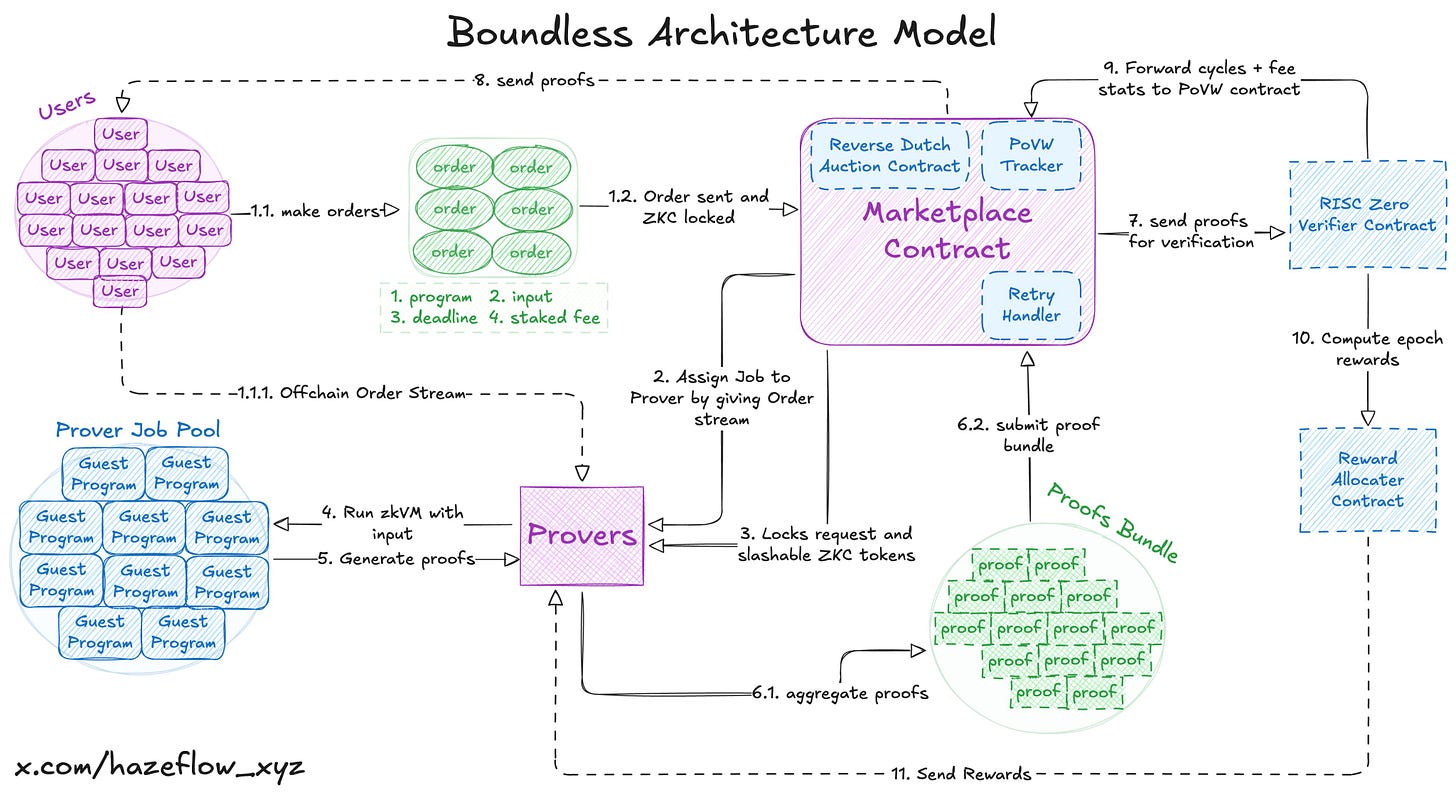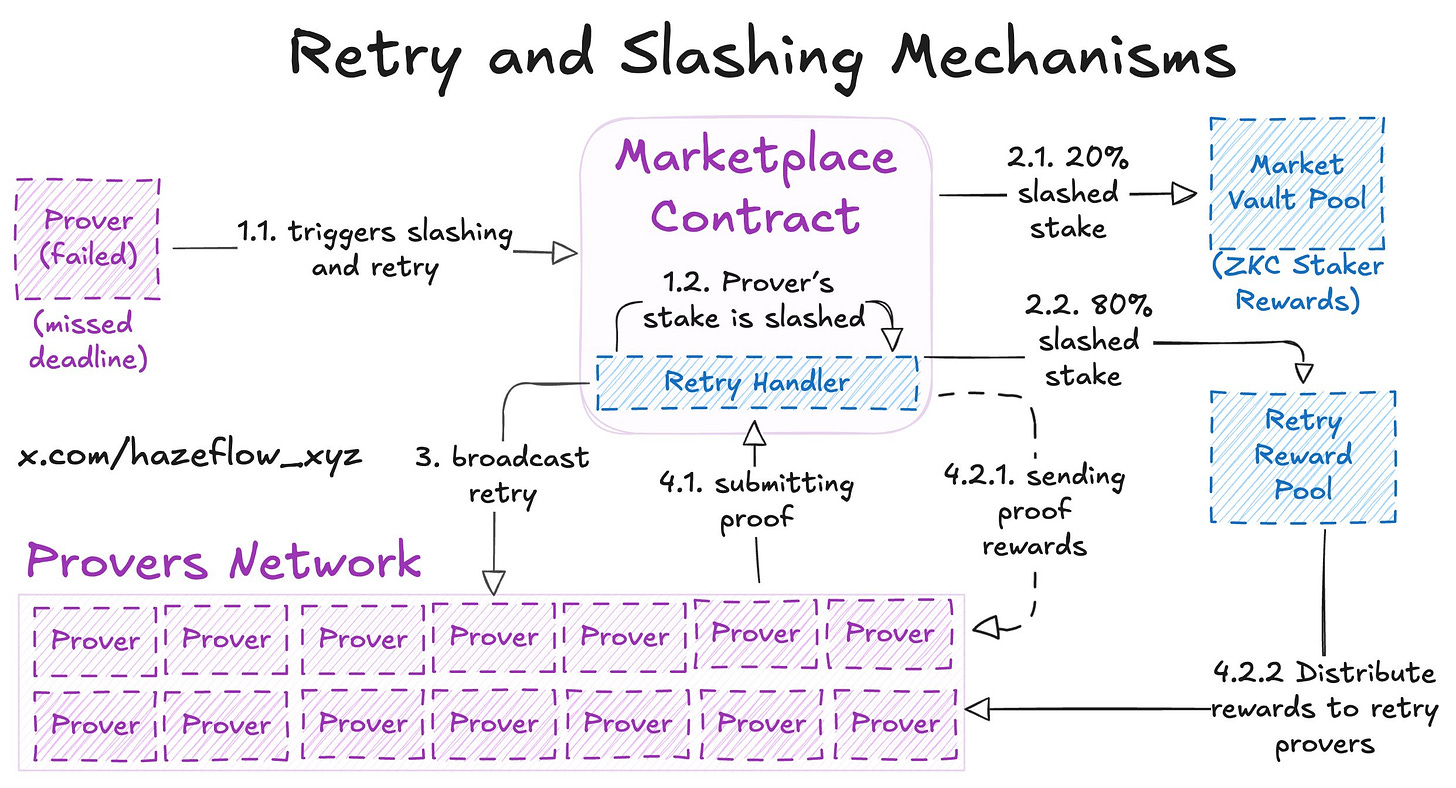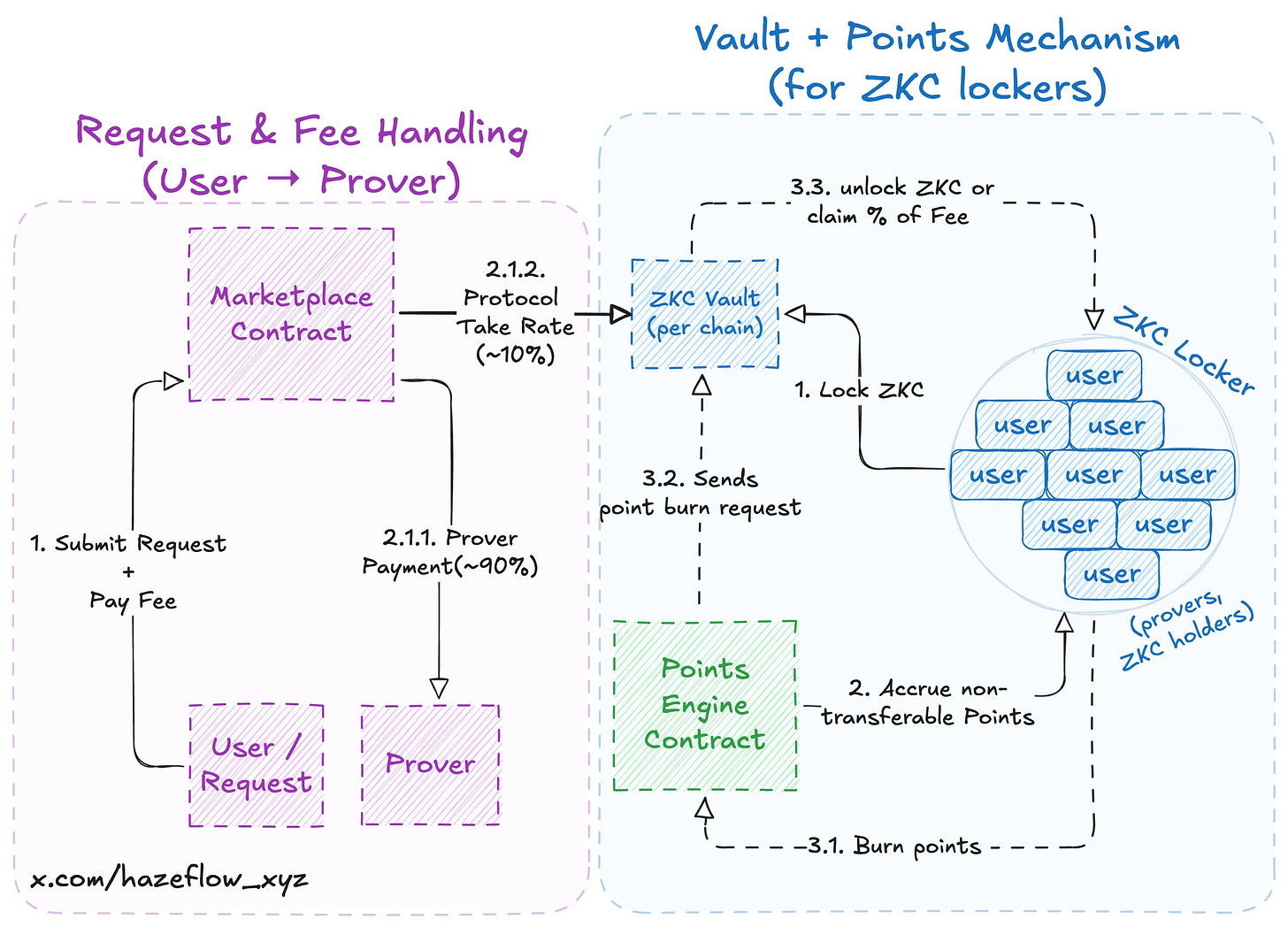Boundless: Explained as a Courier Company
Boundless establishes a marketplace that facilitates secure zk computations, enabling efficient collaboration between developers and provers.
As zk tech grows, it’s turning modular. Layers emerge: some handle computations, others optimize, and marketplaces like Boundless let anyone with hardware join in.
To illustrate this concept, we'll consider Boundless as a global courier company.
Boundless can be best understood as a global delivery marketplace, just instead of shipping boxes, it handles any type of zk computations.
Customers are developers or applications that need jobs completed.
Couriers are provers with the hardware to do the heavy lifting.
Central hub is a smart contract system that makes sure every package (computation) is delivered on time, couriers are paid fairly, and cheaters are punished.
1. The Marketplace Floor
Think of a busy market square:
Customers (Users/Requestors) walk in with jobs: "I need this package delivered, here’s the destination, here’s my budget, and I’ll lock some money up front."
They post these requests on the Marketplace Board (Marketplace Contract).
Couriers (Provers) gather around the board. A job is announced through a Dutch Reverse Auction: instead of prices going down like eBay, they go up over time.
Early birds can grab it cheap, but wait too long and the price gets more attractive, drawing in competition.
When a courier accepts, they also leave a security deposit at the counter(staking ZKC). This proves they’re serious. If they flake, they lose that deposit.
Once locked, the courier takes the package (the zk program + inputs) back to their truck (hardware).
They run the delivery route (zkVM computation or a mathematical calculator that can’t lie) and return with a sealed envelope (proof) that shows the package was delivered exactly as requested, no tampering.
Back at the hub:
Verifier (RISC Zero, instant double-check machine) double-checks the seal in seconds.
If it’s valid, the courier gets paid, their deposit is returned, and the customer receives their verified delivery.
2. What if the courier fails?
Now, imagine one courier grabbed a package but never delivered it. The hub can’t let customers down. Here’s what happens:
The courier’s loses their security bond (slashing): part goes to the hub’s treasury, and part is set aside as a bonus for whoever rescues the job.
The job is reposted on the board, but this time no exclusive reservations, any courier can race to deliver it.
This retry mode creates urgency. Other couriers see not just the original payment but also a chunk of the failed courier’s deposit. Suddenly the job is extra rewarding, so someone quickly picks it up and delivers.
This ensures the market keeps moving. Even bad actors can’t jam it up: at worst, they just pay a fine.
3. How can we support the market long-term?
Behind the bustling square is a vault where investors and couriers can deposit the marketplace’s token (ZKC). Here’s how it works:
When you lock ZKC in the vault, you earn non-transferable points, like loyalty stamps.
Over time, as the market collects fees from every delivery, vault participants can burn their points to withdraw a proportional share of the earnings or unlock their tokens.
Couriers can also stake here. Their locked tokens not only earn points but can also double as the security deposits needed when they accept jobs.
This system makes sure both workers (couriers) and supporters (investors) share in the success of the marketplace. The busier the market, the more rewards flow back.
4. Boundless as a global courier company.
Through this analogy, Boundless becomes easier to picture:
Marketplace Contract is the town square’s job board.
Reverse auctions are the way jobs are priced fairly.
Couriers (Provers) do the heavy lifting, backed by deposits.
Proofs are sealed envelopes: easy to check, impossible to fake.
Slashing and retry keep deliveries reliable.
Vault + Points system keeps long-term supporters and couriers invested.
All of this is powered by cryptography under the hood, but to users and developers, it feels like a self-regulating, always-on gig economy. The only difference is that instead of moving boxes, it’s providing computations for blockchains.
5. Applications on Boundless.
Boundless converts light clients into zk stateless clients to become more secure and trustless by outsourcing their verification work to the network of provers. These clients can verify multiple chain states in parallel and broadcast the results globally through the Boundless Signal, effectively acting as a universal light client for all chains.
This architecture unlocks new kinds of deliveries across the blockchain world.
For cross-chain communication, the Signal works like a global noticeboard where every delivery is stamped and posted.
Instead of sending messengers you have to trust (bridges, multisigs, custodians), any chain can simply check the board and see a certified receipt that another chain’s package arrived.
For developers, Steel is like renting a private workshop inside the courier network. You hand over raw materials, it builds the product off-site, and what comes back is a sealed report (zk proof) that anyone can trust without re-doing the work.
In this way, Boundless transforms computation into a shared courier economy, packages move faster, receipts can be trusted by anyone, and every stop in the network becomes part of a verifiable delivery system.






